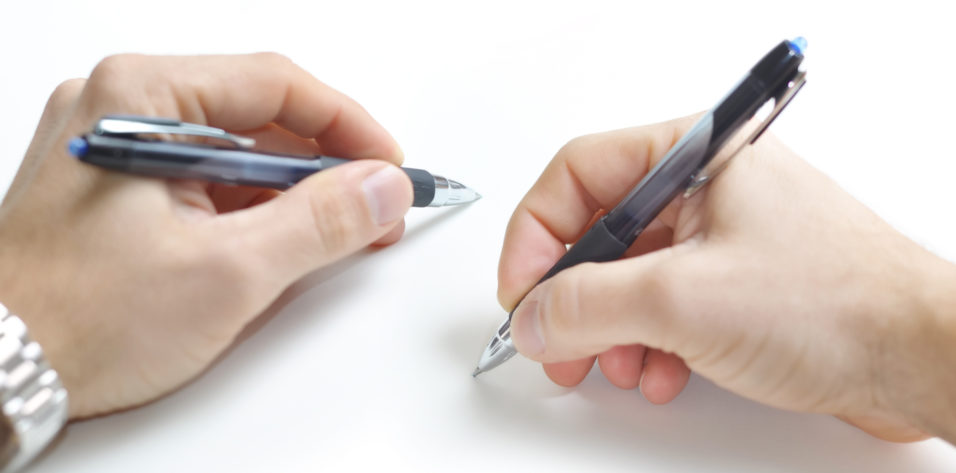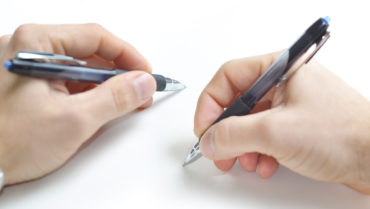“Your job is to cut,” the attending surgeon said as he slapped the scissors into my palm with one hand and finished his one-hand tie with the other. This was an easy job for most third-year medical students on their general surgery rotations. Come down right on the knot or leave a little tail and snip. For this southpaw, however, it was the beginning of many frayed sutures, cut knots, and more close calls with stabbing my colleagues’ hands than I care to admit.
I come from a long line of lefties. Starting with my grandfather, there is a lefty on each branch of my family tree. I was never forced to write the “right” way. I always played sports left-handed, used the computer mouse on the left side of the keyboard, and had that telltale ink smudge all the way down my arm. Thus, I was very left-dominant upon entering medical school.
I never considered that my handedness would affect my career plans until the dreaded scissors situation of 2016. Surely, a more confident medical student would have asked, “Could you please load this left-handed?” However, I was convinced I had to suture and cut with my right hand, and so I became the most mediocre third-year medical student on the surgery rotation.
TO THE LEFT, TO THE LEFT
I entered ophthalmology residency for many reasons, but, in truth, one of them was the ambidextrous Westcott scissors. I marveled at my glaucoma mentors as they inserted stents, placed tubes, and performed complicated cataract surgery, thinking, “I could do that.” I was sure I would succeed in surgical training—my long-unused left hand was itching in my pocket, ready for her day in the sun. However, I quickly learned that there were still obstacles along this route. How could I train for cataract surgery with a right-handed attending? Would I begin fellowship still confused about my handedness? Or worse, would I just become right-handed?
Over the course of my first year, I became more confident and more demanding (or as demanding as a PGY-2 can be). I turned the scope to accommodate myself when creating a capsulorhexis on a right-handed case, and I stridently asked for my sutures to be loaded left. My first cataract case came and went, and I made lefty incisions. Then, finally came a case in which the attending wanted her incisions right-handed. And so, I performed phacoemulsification with my right hand.
FINGERING IT OUT
I set out to write this to encourage those who train left-handed surgeons to be mindful of the difficulties we face in the right-handed surgical world. On the other hand, over the past year, I have realized that perhaps I am already a more confident surgeon because I have not been coddled. Our training is inherently geared toward gently nudging our right-handed colleagues down a more ambidextrous path, while the southpaws must jump in with both hands (literally).
For me, taking this more disciplined path has led to at least partial ambidexterity. However, truly, there are no right-handed or left-handed ophthalmologists. To be a great ocular surgeon, one must use both hands as equally as possible. This is especially important in complex glaucoma and anterior segment surgery, where anterior chambers shrink by the day and we hope that at least one or two zonules are still intact.
CONCLUSION
This brings me back to my first case as a newly minted PGY-2, under the microscope with my glaucoma attending and ready for a trabeculectomy. The pupillary distance was set, my feet were comfortably on the floor, and I was certain I could cut my attending’s sutures with either hand. I grasped the Westcott scissors in my right hand, navigated to the hair-thin suture under the scope, and … broke the suture with the side of the instrument before she finished her final tie. Now, what about ordering that lefty chopper?



